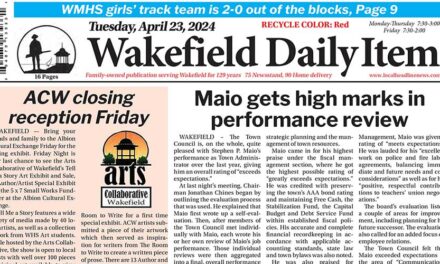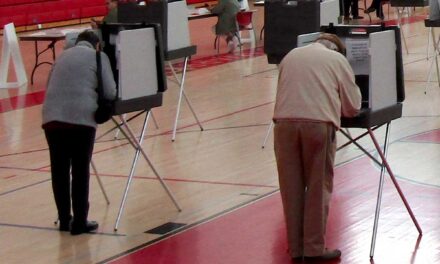By MARK SARDELLA
WAKEFIELD — The Board of Selectmen last night voted to approve the new, FY 2016 water and sewer rates recommended by the Advisory Board of Public Works, which will mean a total combined increase of 3.7 percent.
Public Works Director Richard Stinson and DPW Business and Operations Manager Carol Antonelli were on hand to present the new rates. Stinson said that the new water rate will be $6.15 per 100 cubic feet and the new sewer rate will be $10.55 per 100 c.f., for a combined rate of 16.70 per 100 c.f.
The new water rate means that an average annual water bill (after the discount is taken) will be $664.20 or $166 per quarter. The new sewer rate of $10.55 provides for an average annual sewer bill (after the discount) of $1,139.40 or $284.85 per quarter. The combined average annual water and sewer bill will be $1,803.60 or $450.90 per quarter, based on an average single-family house using 12,000 cubic feet of water, or 89,760 gallons, per year. This represents a total increase of $64.80 per year (after the discount is taken) for an average water and sewer bill or an increase of $16.20 per quarter (after the discount is taken).
Stinson stressed that the assessments that the MWRA charges the town represent 42.87 percent of the water budget and 77.29 percent of the sewer budget.
The new sewer flat rate, charged mainly to those residents with wells, will be $316.50 a quarter or $284.85 after the discount is taken. Sewer charges for most properties are based on the amount of water used, as sewer flow leaving individual properties is not metered. Since there is no town water to measure going into homes with wells, those homes are charged the sewer flat rate.
In response to a question from Selectman Paul DiNocco, Stinson said that there are currently 11 homes in Wakefield that have wells. He said that in setting the sewer flat rate the town uses standards set by the American Water Works Association, which he described as “universal and fair.” He stressed that any homeowner with a well who doesn’t want to pay the sewer flat rate has the option of installing a meter on his well line to serve as the basis for calculating sewer charges.
Stinson also told the Board that the Advisory Board of Public works recommended continuing its policy on second water meters in effect since 2009, when a moratorium on second water meters was implemented. Prior to 2009, second water meters were allowed for systems not connected to the sewer system – mainly in-ground irrigations systems.
Stinson noted that allowing second water meters would not change the total burden to the town of Wakefield as the Water and Sewer divisions’ budgets would remain the same. Allowing second water meters, he explained, would merely shift the financial burden to those homeowners who do not install second meters as the amount of revenue that would be needed to run the department would still be the same.
The DPW chief also maintained that allowing second meters would cause the sewer rates to go up as there would be less flow, which is one of the factors in the formula that the MWRA uses to calculate the town’s sewer assessment.
Stinson said that falling consumption of water continues to be a problem, as rates must be adjusted to compensate for less consumption in order to cover the cost of running the department. He said that the newly approved rates would be sufficient to support the operations of the Water and Sewer divisions for Fiscal Year 2016, which begins July 1.
Published in the June 23, 2015 edition




